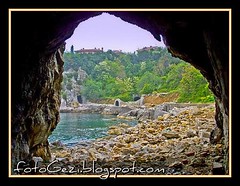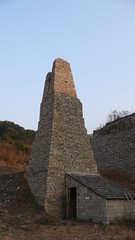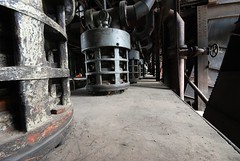
At the end of World War II stood still for a short time in the Ruhr all wheels. The consequences of the bombing were especially severe in the industrial belt. Industrial plants, roads, utility systems and power lines were destroyed.
The goal of the Allied bombing campaign was for the Allies in the obstruction of production and transportation of important goods in and out of war-the so-called armory of the German Reich. In addition, the morale of the German population are weakened. Initial planning for an air war on the Ruhr were already developed at the end of World War II. In 1935 it was in Britain to the establishment of Bomber Command of the Royal Air Force (RAF) with the aim of establishing an offensive air power to be feared in view of a military confrontation with the German Reich. In the following, we developed several bombing plans, including the so-called Ruhr plan. This provided for air strikes on 19 and 22 power stations and coking plants several steel plants in the Rhine and Ruhr. By massive air strikes as soon as possible, the German armaments industry are eliminated.
At the outbreak of the Second World War in the late summer of 1939, but initially there was still appropriate to aircraft, personnel and bombs. A strategic bombing campaign began only after the German campaign in the west on 10 May 1940 laying nightly air raids on the Rhine-Ruhr area is a. The first major blow against the Ruhr on the night of 15 at 16 May 1940 1999 British aircraft were aimed above all to the hydrogenation of coal liquefaction in Oberhausen, Castrop-Rauxel, tub-Eickel, Dortmund, Gelsenkirchen, Bottrop. By the winter of 1940-41 were the marshalling yards at Hamm, Soest, swords, Osnabrück, Münster, Duisburg, Cologne and Dusseldorf with Rodleben, coking plants, aircraft factories and other businesses in the defense industry, especially the Krupp works in Essen, repeated target of British air attacks.
Were previously only targeted attacks have been flown, walked the Royal Air Force from March 1942 to widespread attacks on industry and major cities in the Ruhr and the Rhineland. A major air offensive against the cities along the Rhine and Ruhr began in March 1943 and ended only five months later. An air raid in March 1943 much of the center of Essen and the Krupp works were destroyed, two months later, bombs found their target in the Mohne dam, the destruction of a massive tidal wave triggered. While the targeted heavy air attacks in recent months of the war on small-and medium-sized cities and industrial plants, a large part of the mines was damaged severely in the Ruhr area. Until 1948, the workforce of the mining and steel company engaged primarily to repairs of facilities destroyed by bombs or overload. About half of the housing stock was destroyed. Many residents had left the big cities, the supply situation was extremely precarious. There was a lack of raw materials, energy, food and efficient workforce. Many were killed in the war or those still in captivity.
At first glance appeared the state of the mines to the Allied occupation forces in May 1945 as a more or less intact. In fact, numerous mines include the relatively short development has finished. Very soon it turned out, however, as serious and sustained losses should affect the substance of the Ruhr mining industry because of the war economy.






















